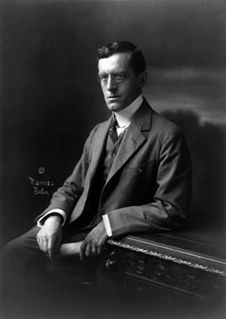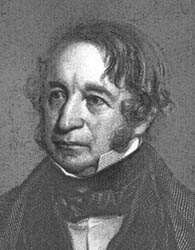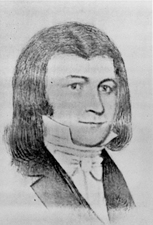
The Second Great Awakening was a Protestant religious revival during the early 19th century in the United States. The Second Great Awakening, which spread religion through revivals and emotional preaching, sparked a number of reform movements. Revivals were a key part of the movement and attracted hundreds of converts to new Protestant denominations. The Methodist Church used circuit riders to reach people in frontier locations. The Second Great Awakening led to a period of antebellum social reform and an emphasis on salvation by institutions. The outpouring of religious fervor and revival began in Kentucky and Tennessee in the 1790s and early 1800s among the Presbyterians, Methodists and Baptists. The awakening brought comfort in the face of uncertainty as a result of the socio-political changes in America.

Julia Ward Howe was an American poetess and author, known for writing "The Battle Hymn of the Republic" and the original 1870 pacifist Mother's Day Proclamation. She was also an advocate for abolitionism and a social activist, particularly for women's suffrage.

Ralph Adams Cram was a prolific and influential American architect of collegiate and ecclesiastical buildings, often in the Gothic Revival style. Cram & Ferguson and Cram, Goodhue & Ferguson are partnerships in which he worked. Together with the architect Richard Upjohn and artist John LaFarge, he is honored on December 16 as a feast day in the Episcopal Church of the United States. Cram was a fellow of the American Institute of Architects.

Richard Upjohn was a British-born American architect who emigrated to the United States and became most famous for his Gothic Revival churches. He was partially responsible for launching the movement to such popularity in the United States. Upjohn also did extensive work in and helped to popularize the Italianate style. He was a founder and the first president of the American Institute of Architects. His son, Richard Michell Upjohn, (1828-1903), was also a well-known architect and served as a partner in his continued architectural firm in New York.
Thomas Danforth was a politician, magistrate, and landowner in the Massachusetts Bay Colony. A conservative Puritan, he served for many years as one of the colony's councilors and magistrates, generally leading opposition to attempts by the English kings to assert control over the colony. He accumulated land in the central part of the colony that eventually became a portion of Framingham, Massachusetts. His government roles included administration of territory in present-day Maine that was purchased by the colony.

Katharine Drexel was an American heiress, philanthropist, religious sister, and educator. She was the second person born in what is now the United States to be canonized as a saint and the first one born a U.S. citizen.

Nathan Appleton was an American merchant and politician and a member of "The Boston Associates".

Dorcas, or Tabitha, was an early disciple of Jesus mentioned in the Acts of the Apostles. She lived in the port city of Joppa, today absorbed by Tel Aviv. Acts describes her as being known for her "good works and acts of mercy", sewing clothes for the poor. When she died, the widows of her community mourned her and sent urgently for Peter, who was in nearby Lydda. As evidence of her charity, they showed him some of the clothes she had sewn, and according to the biblical account he raised her from the dead.

Judah Dana was an American lawyer, judge and politician. He served as a United States Senator from Maine and as Judge of the Maine Court of Common Pleas during the early 1800s.
United Society Partners in the Gospel (USPG) is a United Kingdom-based charitable organization.

A matriarchal religion is a religion that focuses on a goddess or goddesses. The term is most often used to refer to theories of prehistoric matriarchal religions that were proposed by scholars such as Johann Jakob Bachofen, Jane Ellen Harrison, and Marija Gimbutas, and later popularized by second-wave feminism. In the 20th century, a movement to revive these practices resulted in the Goddess movement.
The Catholic Summer School of America originated at the end of the nineteenth century. A Catholic summer school is an assembly of Roman Catholics, both clergy and laity, held during the summer months. It aims to foster intellectual culture in harmony with Christian faith by means of lectures and special courses along university extension lines.

Olive May Winchester (1879–1947) was an American ordained minister and a pioneer biblical scholar and theologian in the Church of the Nazarene, who was in 1912 the first woman ordained by any trinitarian Christian denomination in the United Kingdom, the first woman admitted into and graduated from the Bachelor of Divinity course at the University of Glasgow, and the first woman to complete a Doctor of Theology degree from the divinity school of Drew University.

Annie Shepherd Swan, CBE was a Scottish journalist and fiction writer. She wrote mainly in her maiden name, but also as David Lyall and later Mrs Burnett Smith. A writer of romantic fiction for women, she had over 200 novels, serials, stories and other fiction published between 1878 and her death in 1943. She has been called "one of the most commercially successful popular novelists of the later nineteenth and early twentieth centuries". Swan was politically active during the First World War, as a suffragist, a Liberal activist, and a founder-member and vice-president of the Scottish National Party.

The Plastic Club is an arts organization located in Philadelphia, Pennsylvania. Founded in 1897 for women only, the Plastic Club is one of the oldest art clubs in the United States. It is located on the 200 block of Camac Street, the "Little Street of Clubs" that was a cultural destination in the early 1900s. Since 1991, the club's membership also includes men.

The evangelical revival in Scotland was a series of religious movements in Scotland from the eighteenth century, with periodic revivals into the twentieth century. It began in the later 1730s as congregations experienced intense "awakenings" of enthusiasm, renewed commitment and rapid expansion. This was first seen at Easter Ross in the Highlands in 1739 and most famously in the Cambuslang Wark near Glasgow in 1742. Most of the new converts were relatively young and from the lower groups in society. Unlike awakenings elsewhere, the early revival in Scotland did not give rise to a major religious movement, but mainly benefited the secession churches, who had broken away from the Church of Scotland. In the late eighteenth century and early nineteenth century the revival entered a second wave, known in the US as the Second Great Awakening. In Scotland this was reflected in events like the Kilsyth Revival in 1839. The early revival mainly spread in the Central Belt, but it became active in the Highlands and Islands, peaking towards the middle of the nineteenth century. Scotland gained many of the organisations associated with the revival in England, including Sunday Schools, mission schools, ragged schools, Bible societies and improvement classes.
The African Dorcas Association was a black women's community aid society founded in New York City in January 1828. The women of this group sewed clothes for New York's black children so that they would have appropriate attire for school. They were also one of the first societies where "women met independently and without the supervision of men." Through this work, the members of the African Dorcas Association hoped to make education more accessible for black youth in New York City. After just one year, this organization distributed 168 articles of clothing to school children. They became a prominent contributor to encourage young Black children to attend schools. New Yorkers surrounding the organization did not find it appropriate for black women to be educated or involved in societal issues in this way, yet, despite the opposition, the African Dorcas Association thrived. The society remained in operation into the 1830s.

Esther Elizabeth Wood was an American historian, educator, author, and journalist. She taught history and social science at Gorham State Teachers College for 43 years. After her retirement, she wrote four books, a newspaper column, and numerous articles describing the history of Blue Hill, Maine, where her family had lived for generations, achieving local celebrity as the "town historian". She was inducted into the Maine Women's Hall of Fame in 1994.
John Walker (1769–1833) was a Church of Ireland cleric and academic of evangelical and Calvinist views. He seceded, as founder of a sect calling itself the Church of God, sometimes known as the Walkerites.

Beatrice Clugston was a British philanthropist in Glasgow.















